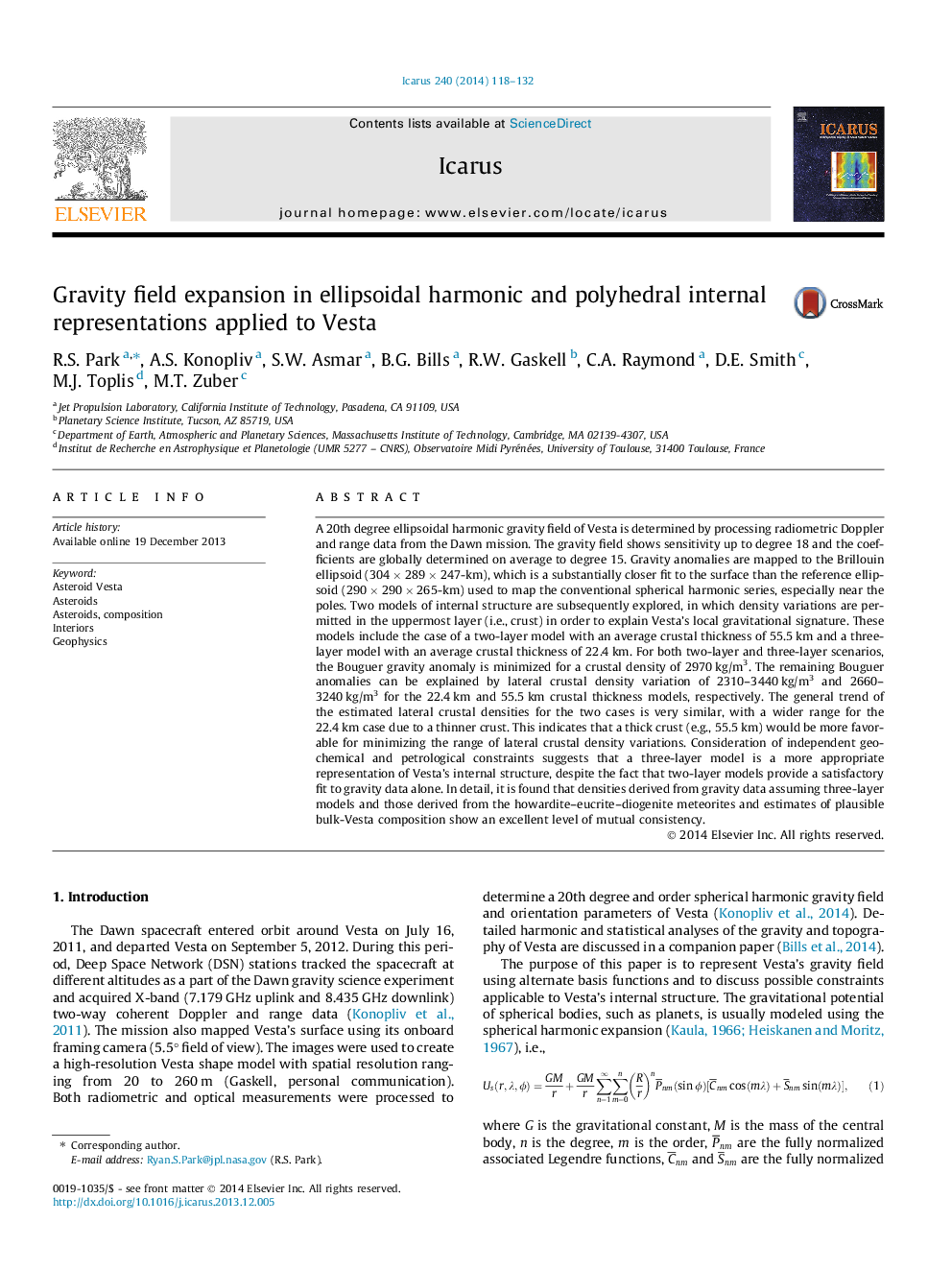| کد مقاله | کد نشریه | سال انتشار | مقاله انگلیسی | نسخه تمام متن |
|---|---|---|---|---|
| 1773070 | 1523550 | 2014 | 15 صفحه PDF | دانلود رایگان |
عنوان انگلیسی مقاله ISI
Gravity field expansion in ellipsoidal harmonic and polyhedral internal representations applied to Vesta
ترجمه فارسی عنوان
گسترش میدان مغناطیسی در نمایه های هارمونیک و چندبعدی داخلی بیضوی که به وستا اعمال می شود
دانلود مقاله + سفارش ترجمه
دانلود مقاله ISI انگلیسی
رایگان برای ایرانیان
کلمات کلیدی
سیارک وستا، سیارک ها، سیارک ها، ترکیب، فضای داخلی، ژئوفیزیک،
موضوعات مرتبط
مهندسی و علوم پایه
علوم زمین و سیارات
علوم فضا و نجوم
چکیده انگلیسی
A 20th degree ellipsoidal harmonic gravity field of Vesta is determined by processing radiometric Doppler and range data from the Dawn mission. The gravity field shows sensitivity up to degree 18 and the coefficients are globally determined on average to degree 15. Gravity anomalies are mapped to the Brillouin ellipsoid (304Â ÃÂ 289Â ÃÂ 247-km), which is a substantially closer fit to the surface than the reference ellipsoid (290Â ÃÂ 290Â ÃÂ 265-km) used to map the conventional spherical harmonic series, especially near the poles. Two models of internal structure are subsequently explored, in which density variations are permitted in the uppermost layer (i.e., crust) in order to explain Vesta's local gravitational signature. These models include the case of a two-layer model with an average crustal thickness of 55.5Â km and a three-layer model with an average crustal thickness of 22.4Â km. For both two-layer and three-layer scenarios, the Bouguer gravity anomaly is minimized for a crustal density of 2970Â kg/m3. The remaining Bouguer anomalies can be explained by lateral crustal density variation of 2310-3440Â kg/m3 and 2660-3240Â kg/m3 for the 22.4Â km and 55.5Â km crustal thickness models, respectively. The general trend of the estimated lateral crustal densities for the two cases is very similar, with a wider range for the 22.4Â km case due to a thinner crust. This indicates that a thick crust (e.g., 55.5Â km) would be more favorable for minimizing the range of lateral crustal density variations. Consideration of independent geochemical and petrological constraints suggests that a three-layer model is a more appropriate representation of Vesta's internal structure, despite the fact that two-layer models provide a satisfactory fit to gravity data alone. In detail, it is found that densities derived from gravity data assuming three-layer models and those derived from the howardite-eucrite-diogenite meteorites and estimates of plausible bulk-Vesta composition show an excellent level of mutual consistency.
ناشر
Database: Elsevier - ScienceDirect (ساینس دایرکت)
Journal: Icarus - Volume 240, 15 September 2014, Pages 118-132
Journal: Icarus - Volume 240, 15 September 2014, Pages 118-132
نویسندگان
R.S. Park, A.S. Konopliv, S.W. Asmar, B.G. Bills, R.W. Gaskell, C.A. Raymond, D.E. Smith, M.J. Toplis, M.T. Zuber,
